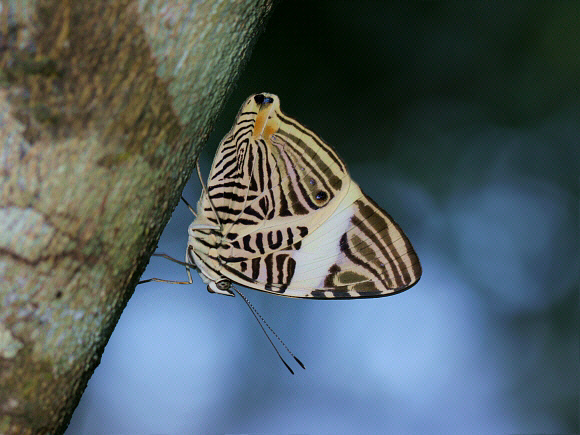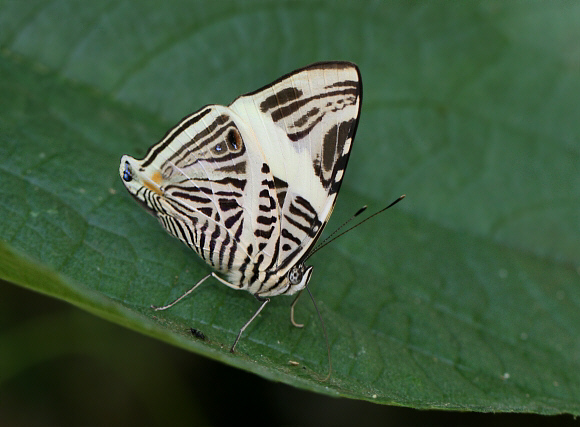
Introduction
The tribe Coeini comprises of 6 genera – Colobura, Baeotus, Historis, Pycina, Smyrna and Tigridia.
There are 2 Colobura species – dirce and annulata, both found throughout the neotropical region.
Colobura dirce can be distinguished from annulata by the wider submarginal band on its underside forewing, and by the slightly different sub-costal markings.
The butterflies habitually sit on the tree trunks in a head downwards posture, at a height of about 2 metres, to imbibe sap and moisture from crevices in the bark. If approached they sometimes try to evade the intruder by running around to the opposite side of the tree, and if followed will run back to their original position – quite literally forcing the observer to run around in circles after them. They are extremely reluctant to take flight when feeding, and if they are forced to do so they quickly return to resume feeding.
Colobura dirce is distributed from Mexico to Argentina.
Habitats
The butterfly breeds in primary and secondary forest at altitudes between 0-1400m but is found more frequently at altitudes below 800m. It is found in both deciduous and evergreen forests, and also commonly occurs in orchards.

Lifecycle
The eggs are white and laid in groups of between 2-10 on leaves of the foodplant.
The young larvae feed on Cecropia leaves and make ‘frass chains’ i.e. chains of droppings linked together by strands of silk, which protrude from the tips of the leaves. When not feeding they rest on these frass chains, which provide them with a defence against marauding ants. For reasons that are not fully understood, ants seem unwilling to walk over frass chains.
When fully grown the larvae are velvety black, adorned with white rosetted spines along the back, and yellow spines along the sides. They feed gregariously in groups of between 5-20. When feeding they bite through the stems, causing alleochemics (anti-herbivore fluids) to bleed from the plant, and stopping it from mobilising chemicals into the area being eaten.
The pupa, as described by DeVries is elongate, cylindrical, and looks like a dead broken twig.
Adult behaviour
Males commonly visit orchards or other sites where there are fallen fruits. They are also sometimes imbibe urine from sandbanks. They usually hold their wings erect but on a few occasions I’ve seen them walking about under the shade of trees, while slowly fanning their wings.
Both sexes are commonly encountered within shady forest, often in company with Tigridia acesta, sitting on tree trunks. They habitually settle in a head-downwards position with the wings held erect, while imbibing moisture from mosses or from crevices in the bark. I have also found them on walls, concrete bridge supports etc, and they will also settle on sources of human sweat such as the straps of rucksacks or camera bags. Sometimes they are found singly, but more often in groups of 2 or 3.

